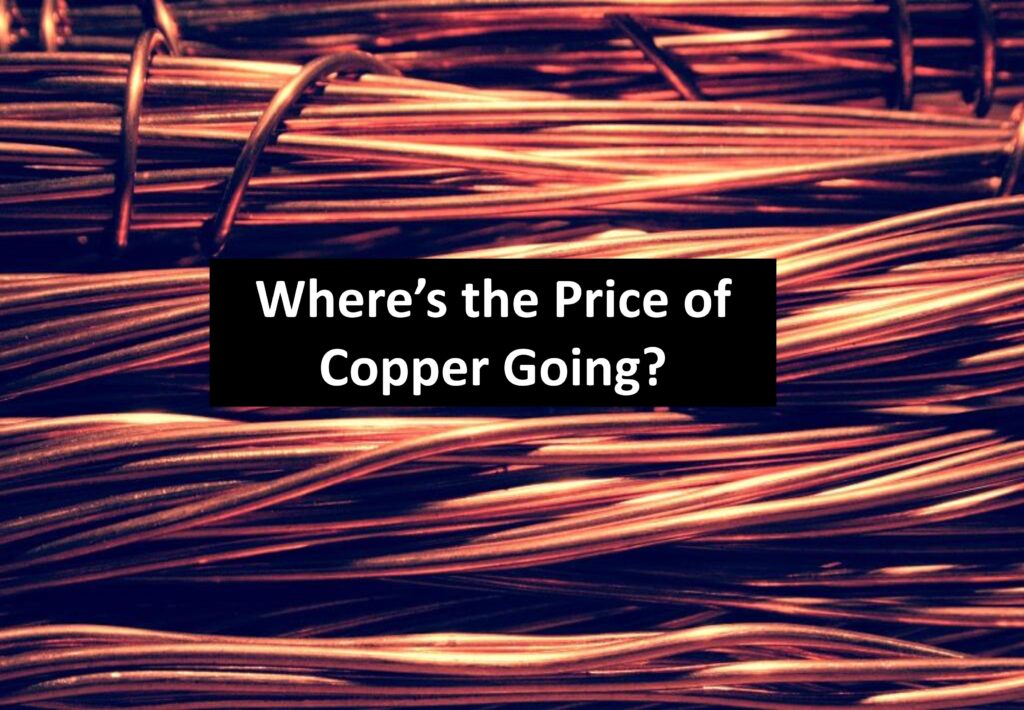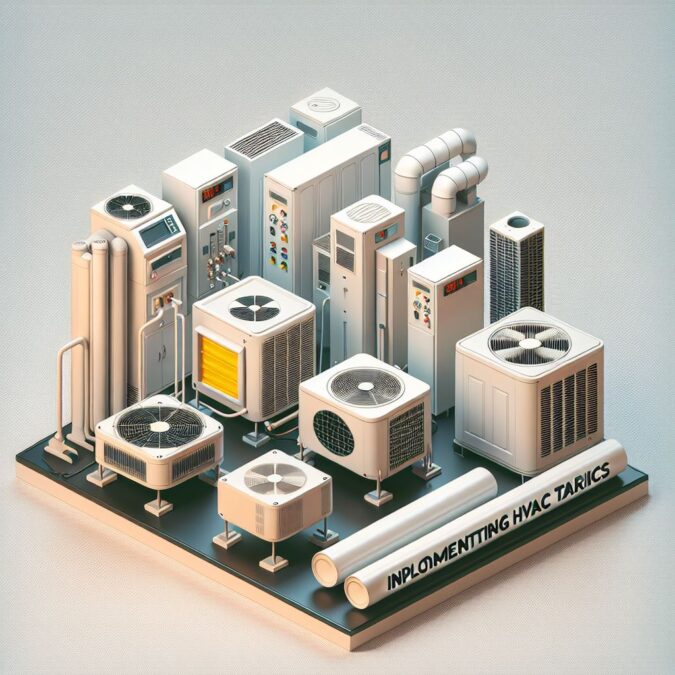This last month has been an interesting one as a content provider for the HVACR Channel and keeping up with the Tariff news has been a daily occurrence. We published a column in our sister ElectricalTrends.com publication this week that we wanted to share with our Industrial Supply Trends Readers.
There are some tariffs we know (China, imported steel and aluminum) and then those (at least at the time of this writing) that are proposed (Canada / Mexico) and then others that are “floated” for consideration, or at least media consumption (EU, country-specific).
What’s next? We, the consuming public, do not know. All we can do is react.
- If you are a distributor, focus on processes to ingest price changes, ensuring you are covered with your T&C’s, communicating with your customers, and, at times, negotiating with your suppliers.
Yes, negotiating, as just because there are tariffs does not mean that all suppliers will pass along price increases similarly. Further, they will compete for your business as well as specific projects for your customers. And yes, this involves more time and inevitably, for most distributors, less gross margin dollars as most distributors will pass the negotiated savings to their customers (a whole separate discussion issue, for another day.)
- If you are a manufacturer, the dynamics are different as you need to consider product costs (production or acquisition) as well as how to pass on the cost. On the production cost it is either determining input costs that need to be adjusted (typically a finance or purchasing issue) and then determining what percentage to pass along. The “pass along” part is where sales gets involved. Determining the resulting price increase may impact on sales (dollars and units) as well as profitability. It also ties to competitive positioning. Communication with your sales organization, and the channel, is critical. Passing along pricing with enough timing is key. The “how” is also important to ensure distributors get it into their system quickly. And then there is the negotiation element to support specific distributors, and their customers, within contracts, SPAs, and to capture projects. In some instances, sales needs to interact with key end-users.
Lots going on with today’s tariffs and possibly Aprils, but let’s think about copper.
 What About Copper?
What About Copper?
Copper is an important material to the both the electrical and Industrial industries. It is also caught up in the tariff, or at least, “national interest” discussion.
Chris Sokoll from DISC (a leading data provider in the Electrical Channel) recently shared these observations regarding Executive Order 14220, issued on February 25, 2025, titled “Addressing the Threat to National Security from Imports of Copper”:
“This executive order raises some significant concerns to remain aware for the electrical industry by addressing the national security implications of the U.S.’s dependence on foreign copper sources. The order initiates a comprehensive investigation into the effects of copper imports, potentially leading to tariffs or quotas that could drastically increase domestic copper prices and disrupt supply chains. Any resulting price increases would directly impact the cost of manufacturing electrical components and infrastructure, potentially causing delays in projects and affecting the availability of materials for development and maintenance. Wire and cable alone is as much as 17% of electrical distribution sales, not to mention all of the copper involved in other electrical supplies.
While the order aims to incentivize domestic copper production, smelting, and refining – ultimately creating a more secure and resilient supply chain – the transition period will likely be characterized by uncertainty, legal, and environmental challenges coupled with market volatility. This uncertainty, compounded by potential disruptions to the flow of copper needed for energy technologies like renewable energy infrastructure, grid upgrades and new construction, poses substantial challenges to the industry’s long-term planning and the nation’s transition to a more domestic reliance economy. The investigation’s findings, which will analyze factors such as supply chain concentration and foreign government subsidies, will determine the ultimate extent of the order’s impact on the electrical industry.
Managing China Tariffs
Remember, we still have the tariff on China from 2018. Now we have another 20%. But the impact, for the industry, is less as, according to NEMA, electrical imports from China have reduced from about 32% to 19% (note, that is not products from Chinese-owned companies as a number of Chinese companies have moved production to other Asian countries and to Mexico.)
But almost 20% is still an important percentage and, for some manufacturers, they could be sourcing much, of not all, of their material from China or have all of their production capacity in China.
What to do?
If you manufacture in China or source from China, it’s a little late to do much. The question is “how do you mitigate the impact” and “what should you be considering longer term?’
I was invited to a webinar by East West Associates that is being held on Thursday, April 3rd. For those who do not know East West, they help manufacturers with overseas sourcing. They specialize in China and, if I recall, were working with companies in Mexico.
They are holding a Q&A with senior executives from US-China Business Council and East West Associates.
The invite said:
“With 20% baseline tariffs added to existing China tariffs, some products imported from China may see rates as high as 40%. Manufacturers are struggling to deal with on-again, off-again, on-again China tariffs. Although no one predicts with certainty what will happen tomorrow, our experienced experts will discuss…
- What specifically has happened already, in 2025 alone?
- What are the best bets on where we’ll wind up?
- What can US global manufacturers do to prepare, in a period of uncertainty?
This Q&A webinar is devoted to answering the following questions (also those of you and other attendees might ask in real time):
- Please explain the basic details of the latest China tariffs. On what products? What actually are the 2025 tariff rates?
- How do the 2025 China tariffs differ from last year’s tariffs on products imported to the US from China?
- What US industries are most affected by the new China tariffs?
- What have been China’s current responses to US tariffs? What do you think their future responses and actions are likely to be?
- Is it worthwhile considering shipping our China products to a low- or no-tariff country before importing them into the US? How does that work? Or does it?
- Can you talk about new, current, or likely new tariffs on products imported into US from Mexico, Canada, Southeast Asia countries and regions of Europe? What are the “reciprocal tariffs” likely to be?
- What are your opinions as to whether 2025 tariffs are temporary or permanent? What are the odds of getting Executive-order tariffs enacted into law?
- How do you interpret the Trump administration’s long-term Tariff Policy objectives?
- What are some pros & cons of our acting immediately to mitigate the effects of these new China tariffs, vs. taking a wait-and-see approach?
- If we’re already manufacturing in China or currently rely on Chinese suppliers, should we continue doing so? Why?”
While tariffs may come and go and, ultimately, be a negotiating tactic to achieve specific objectives, tariffs with China have proven to be enduring, and may continue to be. Aside from the political dynamics, there are economic considerations underpinning the cost differential. Learning more about what manufacturers can do / should do could be informative. I encourage you to consider attending if you want to know more about the dynamics of tariffs on China and how they will / may impact your business. Click here to register.
Whether you agree or disagree with tariffs is, unfortunately, irrelevant as we are not involved in the decision-making. They will be a tool in the policy-making toolkit and will be part of the political, and media, lexicon. The industry needs to be informed and prepared to respond as efficiently as it can. They will be disruptive (process, maybe impacting the market). How you manage them will be instrumental to achieving your desired level of success.
Do scenario planning but, most importantly, be as proactive as you can, automate what you can, and seek to communicate and be informed.
Earlier this month we shared 7 key tactical actions you can take for whatever tariff actions are coming or not coming in a column.
We appreciate your support and feedback, so please feel free to reach out with any comments.
Late last week it was “Let’s get ready to rumble” and now the cage match tariff talk has gone back into a 30-day negotiation talk period at least with the NAFTA participants. Where it ends up will be interesting to watch, but as a distribution mentor used to tell me often at Crescent Electric Supply as a channel leader “you must plan for all contingencies.”
So, how can you be in the best position as a HVACR Channel leader to plan for all tariff contingencies?
David and I came up with a tariff contingency planning checklist for any potential tariff impacts that you might want to consider.
- Country of origin and getting that information updated in your ERP and tracking system on every SKU you sell.
- If Tariffs are enacted that affect you – Review your T&Cs on outstanding quotes and your T&Cs on currently quoted projects
- Talk with your manufacturer and distributor partners early and often on how you are together going to handle any Special Pricing Agreement (SPA) updates at the customer level. This is a big task. Use a Pareto process and start with the largest customer potentially effected on a SPA change and work down the list. If it happens, go fast and bring the resources you need to the project to get covered on 80% of the business impact as fast as possible.
- How does a tariff impact affect your backside rebate income? A rather big topic as manufacturers unit volume may stay flat, but the purchases made by distributors may grow in sell price by double digits. Again, talk with your channel partners early and often, as surprises and changes here that are not communicated properly can destroy partnerships.
- Commission to your sales teams … Do you consider a “cap” vs compensating them on tariff-inflated revenue?
- What should you buy and store? With Tariffs come risks upside and downside to a buy and store approach and how much risk do you want as an organization? If you are willing to make a bet, make sure you do it with proper data.
- If tariff action puts you in an Average Cost position where you have the advantage against the competition how do you get paid more for that advantage without being perceived as taking advantage of that with your customers?
The above quick short list is important to review with your teams. If a tariff happens be in position to act quickly. So, where do you start? I suggest starting with sell price and working backwards. For example: if you have 30% of your stock sales tied to a Customer Specific Price (CSP) or SPA with a supplier you need to know how to react customer by customer on SPAs and CSP’s.
I reached out to my friends from ACTvantage- Pradip Krishnadevarajan and Senthil Gunasekaran for some additional comments. Their books on Customer Segmentation and Pricing Management I have used for my entire career as a distribution leader and they always have great advice.

